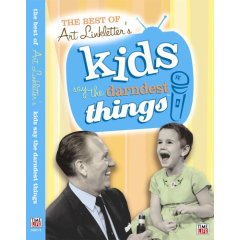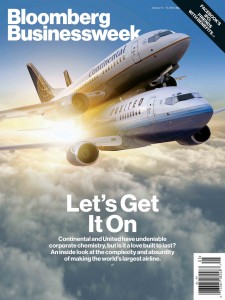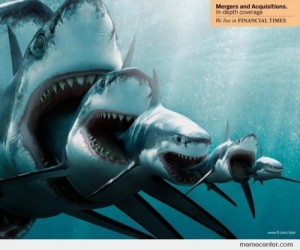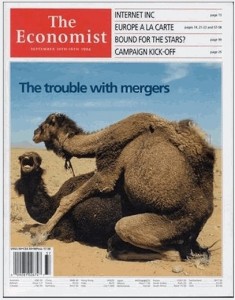 Kids say the darndest things, don’t they? Certainly, college kids do on weekly current events and readings quizzes.
Kids say the darndest things, don’t they? Certainly, college kids do on weekly current events and readings quizzes.
You may think, for instance, that the CPI is the Consumer Price Index. And you would be sure of that if you just read it in a text assigned for the day’s class.
But to one of my 28 students in Reporting I, it is the Corporal Payment Index. To another, it’s the Compared Probability Index. To a third, it’s the Current Percentage Index.
One of my favorites, though, is the College Placement Index. Problem is, I’m not sure where the author of that one would place. Still, we must give her and the others points for inventiveness, no?
Indeed, it may be that these kids, mostly freshmen and sophomores, have been getting points for inventiveness for years. They had to make decent grades to get through high school and into a Big Ten university after all. It just appears that their high school teachers didn’t make them work too hard for those grades. Certainly, the kids didn’t learn how to give the text, say, a quick scan before a quiz.
Do I sound exasperated? Well, these kids plan to go into journalism and you wouldn’t know that from the acquaintance some have with current affairs. It’s not just that one of the most common measures of the economy eludes them. It’s that they don’t appear to read the news much, even when they know they will be asked about it each week.
It wasn’t Egypt that defied the U.S., for instance, by saying it would put 19 Americans on trial in an investigation on nonprofits. No. According to one of my students, it was Canada. Canada! For another, it was – stunningly – “Newt.” To a third it was “Obama.” Did they even read the question?
Who is the Palestinian president? Okay, so maybe an answer like “Muhamed” or “Hussein” is conceivable. But “Gadafi?” “Addis Abba?” “Aasad?” “Hafnet?” And, my favorite, “Netanyahu” (courtesy of two students).
 Yes, kids in or barely out of their teens may be forgiven for not knowing the names of leaders of places they have no connection to. But not when those names are on the front page of the New York Times a day or two before a quiz drawn from that page. The paper is free on campus, including just two floors down in the J School, not to mention available online. They know where the answers are before walking in every week. They don’t have to look much beyond the headlines.
Yes, kids in or barely out of their teens may be forgiven for not knowing the names of leaders of places they have no connection to. But not when those names are on the front page of the New York Times a day or two before a quiz drawn from that page. The paper is free on campus, including just two floors down in the J School, not to mention available online. They know where the answers are before walking in every week. They don’t have to look much beyond the headlines.
I should be able to shrug this all off. Chalk it up to high school teachers who themselves may not even read newspapers anymore – it’s a generational thing, isn’t it? These kids have Facebook, YouTube, ESPN and Entertainment Tonight instead of newspapers. And nitty-gritty stuff like the names of national leaders just washes over them.
But because they do have such a wealth of information, they should be the most well-informed generation ever. They have a zillion free news sources on their computers. They have Jon Stewart. They have TV and radio everywhere, including on their computers.
And yet some say Israel blamed “Palestine” or Iraq or Syria (two students) for bombing Israeli personnel in the capitals of India and Georgia. We may be at war with Iran before the year ends and these kids won’t have clue about what led up to it.
It’s as if the information glut has made them dumber. All those warring countries just blend together in some kind of mashup. The kids don’t need to separate it out or know anything because they can Google it. Their heads can remain blissfully empty, undisturbed by the information overload.
But what about common sense? Is it sensible to say the vice president and likely future leader of “The Senate” arrived in the U.S. on Tuesday, Feb. 14? How about “Congress?” Or, “Syria?” And could Johnson and Johnson be selling “shoe” implants abroad even after the FDA rejected sales in the U.S.?With answers like that, can they wind up among the leaders of journalism tomorrow? Sadly, unemployment may be their more likely fate. But they won’t be counted among the ranks of “discouraged” workers. At least four say it is “lazy” workers the government doesn’t count as jobless because they’ve stopped searching.
Yes, I try to put myself back into the head of a 19- or 20-year-old as I work with these kids. All these annoying little things on quizzes, I know, may take a backseat to getting through Spanish or getting into the right sorority or, as is true for many kids, working too many hours a week to study. Maybe fights with girlfriends or boyfriends keep them from focusing on school. Or maybe there are real problems at home that plague them.
But, really now, can the CPI be the Calculated Projected Index, the Central Population Index or the Chief Production Index? No points for inventiveness, I’m sorry to say. Instead, they need to read the papers and crack those books to get through my class. They have their work cut out for them, and so do I.




